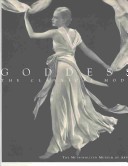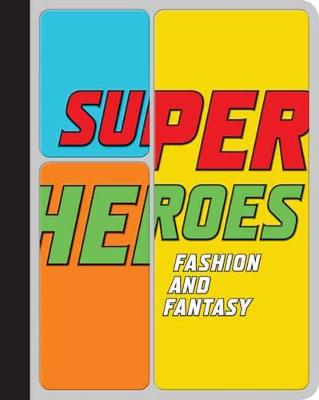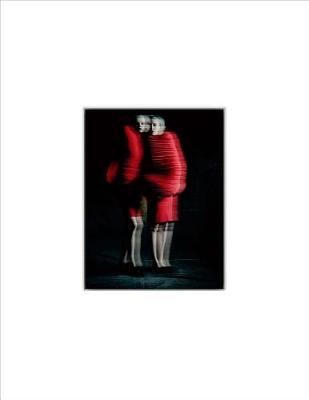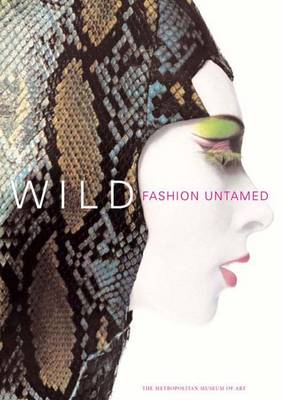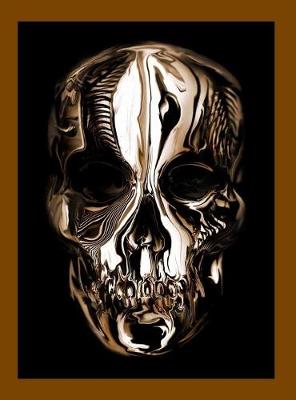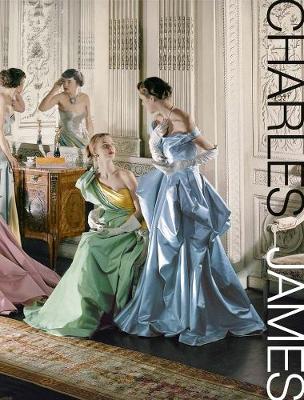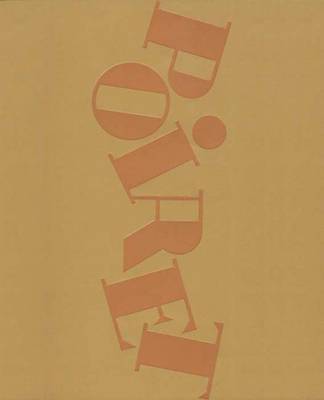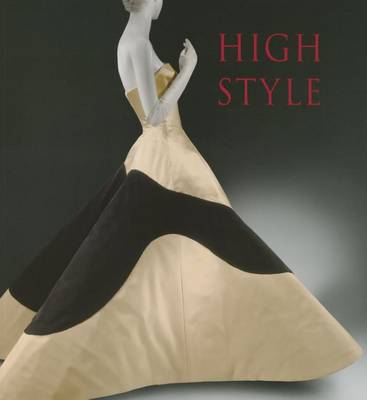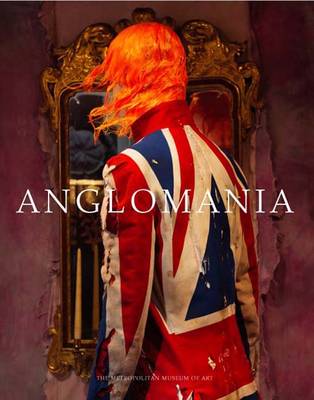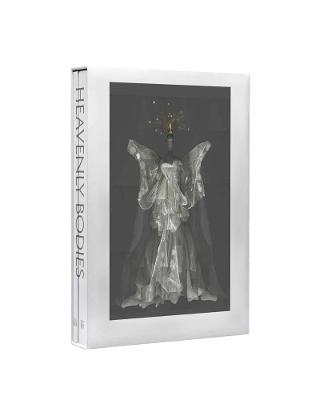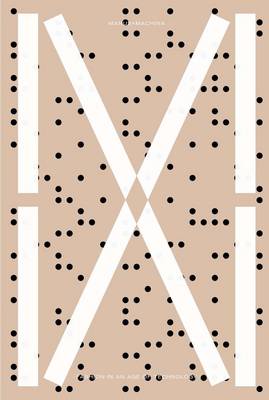Metropolitan Museum of Art
13 total works
The provocative punk aesthetic and its incendiary influence on high fashion
Since its origins in the 1970s, punk has had an explosive influence on fashion. With its eclectic mixing of stylistic references, punk effectively introduced the postmodern concept of bricolage to the elevated precincts of haute couture and directional ready-to-wear. As a style, punk is about chaos, anarchy, and rebellion. Drawing on provocative sexual and political imagery, punks made fashion overtly hostile and threatening. This aesthetic of violence – even of cruelty – was intrinsic to the clothes themselves, which were often customized with rips, tears, and slashes, as well as studs, spikes, zippers, D-Rings, safety pins, and razor blades, among other things.
This extraordinary publication examines the impact of punk’s aesthetic of brutality on high fashion, focusing on its do-it-yourself, rip-it-to-shreds ethos, the antithesis of couture’s made-to-measure exactitude. Indeed, punk’s democracy stands in opposition to fashion’s autocracy. Yet, as this book reveals, even haute couture has readily appropriated the visual and symbolic language of punk, replacing beads with studs, paillettes with safety pins, and feathers with razor blades in an attempt to capture the style’s rebellious energy. Focusing on high fashion’s embrace of punk’s aesthetic vocabulary, this book reveals how designers have looked to the quintessential anti-establishment style to originate new ideals of beauty and fashionability.
Published by The Metropolitan Museum of Art/Distributed by Yale University Press
Exhibition Schedule:
The Metropolitan Museum of Art
(05/09/13–08/14/13)
From Wonder Woman’s satin stars and golden bracelets to Batman’s brooding cape and mask, the style of superheroes’ dress has influenced both street wear and high fashion. This richly illustrated book explores how radical couture, avant-garde sportswear, and state-of-the-art military garments—as seen through the lens of the superhero—can be metaphors for sex, power, and politics. Beginning with the origins of the superhero costume, this volume looks at how designers have been influenced by iconographic components such as the cape, mask, boots, and unitard. Costumes, such as those worn by Batman and Catwoman, are examined as reflections of sexual and physical prowess, while others, most notably those of Superman and Captain America, are analyzed as political propaganda.
Superheroes also explores superpowers and their manifestations––literal, symbolic, or metaphorical: Flash’s speed, Iron Man’s invulnerability, Hulk’s strength, and Spiderman’s agility are presented in their fantastical evocations. Featured designers include Pierre Cardin, John Galliano, Azzedine Alaia, Giorgio Armani, Hussein Chalayan, Alexander McQueen, Nicolas Ghesquiere, Jean Paul Gaultier, Comme des Garçons, and Walter van Beirendonck.
Published in association with The Metropolitan Museum of Art
Exhibition Schedule:
The Metropolitan Museum of Art (May 7 – September 1, 2008)
The great pantheon of fashion designers produces only a handful of creators who are masters of their métier. Rei Kawakubo of Comme des Garçons is one of them. Widely recognized among her contemporaries as the most important and influential designer of the past forty years, she has, since her Paris debut in 1981, defined and transformed the aesthetics of our time. This lavishly illustrated publication examines Kawakubo’s fascination with interstitiality, or the space between boundaries. Existing within and between dualities—whether self/other, object/subject, art/fashion—Kawakubo’s work challenges the rigid divisions that have come to define received notions of identity and fashionability, inviting us to rethink fashion as a site of constant creation, re-creation, and, ultimately, hybridity. Featuring brilliant new photography, and thought-provoking texts by Andrew Bolton, this book expresses the conceptual and challenging aesthetic of this visionary designer. An insightful interview and illustrated chronology of Kawakubo’s career provide additional context.
Published by The Metropolitan Museum of Art/Distributed by Yale University Press
Exhibition Schedule:
The Metropolitan Museum of Art, New York
(05/04/17–09/04/17)
Lavishly illustrated and entertainingly written, Wild reveals how faunal apparel, whether in the form of pelts, plumes, prints, or animal symbolism, has represented and will continue to represent one of man's more primal instincts. This book accompanies an exhibition at The Metropolitan Museum of Art (November 9, 2004, to February 13, 2005).
“An authoritative and moving insight into the legacy of the British designer.”—Carola Long, Financial Times
“McQueen’s brilliance is celebrated in this sumptuous tome.”—Harper’s Bazaar
“Excellent.”—Huffington Post
Arguably the most influential, imaginative, and provocative designer of his generation, Alexander McQueen both challenged and expanded fashion conventions to express ideas about race, class, sexuality, religion, and the environment. Alexander McQueen: Savage Beauty examines the full breadth of the designer’s career, from the start of his fledgling label to the triumphs of his own world-renowned London house. It features his most iconic and radical designs, revealing how McQueen adapted and combined the fundamentals of Savile Row tailoring, the specialized techniques of haute couture, and technological innovation to achieve his distinctive aesthetic. It also focuses on the highly sophisticated narrative structures underpinning his collections and extravagant runway presentations, with their echoes of avant-garde installation and performance art.
Published to coincide with an exhibition at The Metropolitan Museum of Art organized by The Costume Institute, this stunning book includes a preface by Andrew Bolton; an introduction by Susannah Frankel; an interview by Tim Blanks with Sarah Burton, creative director of the house of Alexander McQueen; illuminating quotes from the designer himself; provocative and captivating new photography by renowned photographer Sølve Sundsbø; and a lenticular cover by Gary James McQueen.
Published by The Metropolitan Museum of Art/Distributed by Yale University Press
Exhibition Schedule:
The Metropolitan Museum of Art
(May 4–August 7, 2011)
Charles James, often considered to be America’s first couturier, was renowned in the 1940s and 1950s as a master at sculpting fabric for the female form and creating fashions that defined mid-century glamour. Although James had no formal training as a dressmaker, he created strikingly original and complex designs, including intricate ball gowns worn by members of high society in New York and Europe. This lavishly illustrated book offers a comprehensive study of James’ life and work, highlighting his virtuosity and inventiveness as well as his influence on subsequent fashion designers.
Featuring exciting new photography of the spectacular evening dresses James produced between 1947 and 1955, this publication includes enlightening details of these intricate creations alongside vintage photographs and rarely seen archival items, such as patterns, muslins, dress forms, and sketches. A detailed and illustrated chronology of James’ life describes his magnetic personality, his unorthodox design processes, his colorful supporters—such as Salvador Dalí, Elsa Schiaparelli, Christian Dior, and Cristobal Balenciaga—and profiles of a number of his famous clients, such as Gypsy Rose Lee. With flair and style echoing that of its subject, Charles James brings to life one of the most fascinating and creative figures in American fashion.
Published by The Metropolitan Museum of Art/Distributed by Yale University Press
Exhibition Schedule:
The Metropolitan Museum of Art
(05/08/14–08/10/14)
“High Style is filled with fashion inspiration and information. . . . Nearly every page…includes a captivating photo of one of the collection’s lavish garments or accessories.”—Threads
Published for the first time in paperback, this lavishly illustrated volume originally appeared in 2010 to celebrate the transfer of the Brooklyn Museum’s historic costume collection to The Metropolitan Museum of Art. This comprehensive survey highlights more than 200 works selected from this internationally renowned collection, which comprises nearly 25,000 extraordinary women’s and men’s garments and accessories from the 18th through the 20th century. Among the featured works are sumptuous 19th-century gowns from the House of Worth, exquisite dresses by the great 20th-century French couturiers, iconic Surrealist-based designs of Elsa Schiaparelli, sportswear classics from pioneer American female designers, and the incomparable draped and tailored creations of Charles James, along with exceptional shoes and accessories.
Published by The Metropolitan Museum of Art/Distributed by Yale University Press
Exhibition Schedule:
Legion of Honor, Fine Arts Museums of San Francisco
(03/14/15–07/19/15)
Cincinnati Art Museum
(11/07/15–01/24/16)
From AngloMania, we learn that Englishness is a romantic construct based on fictive and imaginary narratives. In terms of fashion, these narratives emerge as ones that are satirical, nostalgic, theatrical, and like the English weather, at once indomitable and unpredictable.
Since antiquity, religious beliefs and practices have inspired many of the masterworks of art. These works of art have, in turn, fueled the imagination of fashion designers in the 20th and 21st centuries, yielding some of the most innovative creations in costume history. Connecting significant religious art and artifacts to their sartorial expressions, Heavenly Bodies: Fashion and the Catholic Imagination provides a critical analysis of fashion’s engagement with notions of the divine. Exploring fashion’s complex and often controversial relationship with Catholicism, Heavenly Bodies probes what dress reveals about the state of religion and spirituality within contemporary culture, and how it may manifest—or subvert—Catholic values and ideology. Art objects, such as devotional paintings and altarpieces from The Met’s collection, are presented alongside fashions from designers including Cristóbal Balenciaga, Callot Soeurs, Domenico Dolce and Stefano Gabbana, John Galliano, Jean-Paul Gaultier, Madame Grès, Christian Lacroix, Karl Lagerfeld, Jeanne Lanvin, Claire McCardell, Alexander McQueen, Thierry Mugler, Elsa Schiaparelli, and Gianni Versace. The volume also presents a selection of ecclesiastical vestments and accessories from the Vatican collection, many of which have not been published before.
Published by The Metropolitan Museum of Art/Distributed by Yale University Press
Exhibition Schedule:
The Metropolitan Museum of Art
(05/10/18–10/07/18)
The complex and often ambiguous relationship between the hand crafted and the machine made is examined in this intriguing look at the ever-changing world of fashion and taste. Manus x Machina traces styles of dress from one-of-a-kind works and haute couture created by highly skilled artisans, through the introduction of industrial manufacturing, to extraordinary recent technological advancements applied to high fashion, such as 3D printing, laser cutting, and computer-generated weaving and patterns. The oppositional relationship between the machine, as representative of democracy and mass production, and the hand, as the hallmark of elitism, is explored in its many facets in this fascinating book.
Paradoxically, technology in fashion has both advanced artistic creation and obscured the sense of the designer’s expert hand. Similarly, handmade garments have come to represent either a nostalgia for lost craftsmanship or, in haute couture, a cult of personality and affluence. Interviews with renowned and cutting-edge designers such as Sarah Burton, Karl Lagerfeld, and Miuccia Prada discuss how technology can blur the line between haute couture and prêt-à-porter, and ultimately question the relevance of the distinction between hand and machine.
A tour de force in art book production, Manus x Machina incorporates two volumes into its innovative package. The main volume of the book includes a smaller hand-sewn booklet, which features the printed interviews, tucked into the back jacket flap. The outer cover of the main volume is made of three-ply plastic layers with high-frequency weld and die-cut flaps. The paperback cover is die cut (modelled on the punch cards used in the first automated weaving looms), and the main volume includes 5 different paper stocks and silver foil stamping, and is printed with both high-density and ultraviolet inks. The book also features new photography of extraordinary pieces, including intricate 19th-century floral designs by William Morris, handcrafted haute couture of designers such as Christian Dior and Alexander McQueen, and the specatuclar 3D creations of Iris van Herpen.
Published by The Metropolitan Museum of Art/Distributed by Yale University Press
Exhibition Schedule:
The Metropolitan Museum of Art
(05/05/16-08/14/16)

